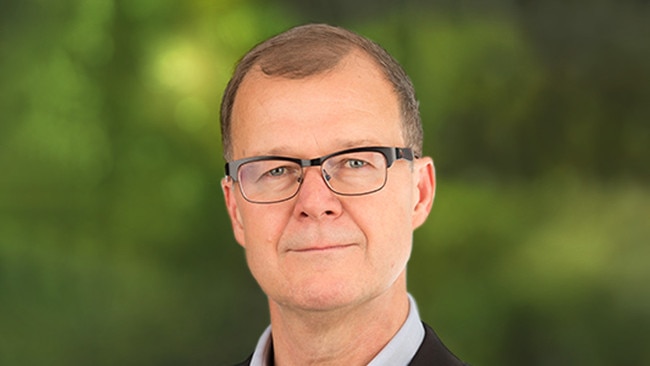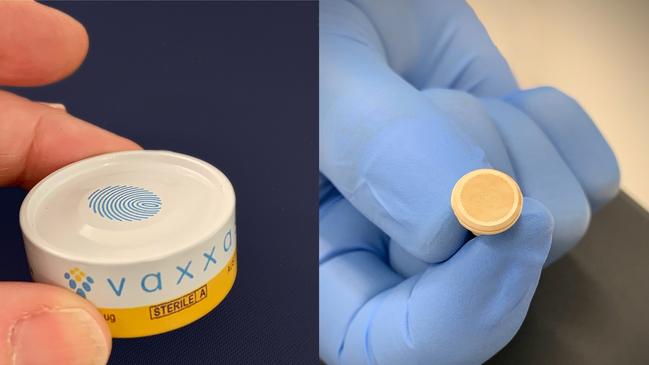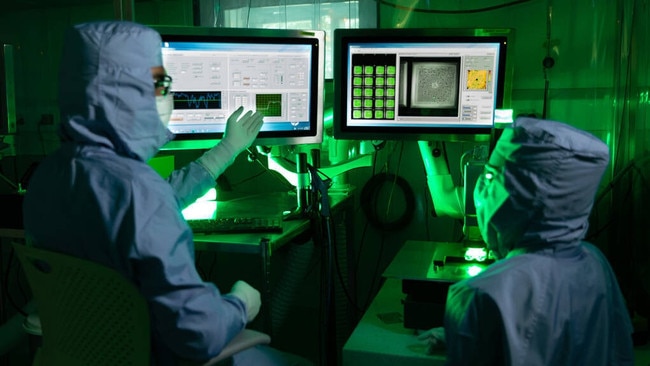Vaxxas Covid-19 patch vaccines are a step closer
Receiving vaccines via a patch rather than a needle has drawn a step closer, with biotech firm Vaxxas receiving a federal co-investment grant.

Receiving vaccines via a patch rather than a needle has drawn a step closer, with biotech firm Vaxxas receiving a federal co-investment grant.
The company plans to produce up to 300 million patch doses each year at full capacity.
Its manufacturing centre is under construction at Brisbane’s Northshore Hamilton, courtesy of an investment by the Queensland government.
On Thursday a buoyant Vaxxas CEO David Hoey said: “Scientifically, the needle and syringe is 170 years old and the only reason we put vaccines into people by needle and syringe is because it‘s the only thing we had.”
He said vaccine patches not only were less painful and less invasive, they dispensed vaccines more efficiently.
The $600,000 from the federal government adds to the millions being poured into the patch’s development.
Vaxxas was founded by University of Queensland commercialisation firm Uniquest in 2011.

Mr Hoey said an existing building at Northshore Hamilton was being refurbished as a hi-tech laboratory and would employ 120 people. He expected the company to move into the new lab within 12 months.
Patches contain a foil seal that is peeled off. The patch is pressed against the skin and a button on the back pushed to administer vaccine for about 10 seconds. The patch delivers the vaccine through thousands of tiny prongs.
“In that tiny patch, there are thousands of projections that are only about a quarter of a millimetre long. It just looks like sandpaper,” Mr Hoey said. The sensation was not painful: “You feel like you are being flicked.”
He said vaccine was delivered more efficiently because there was 10,000 times the density of immune cells in the skin compared to an injection thrusting vaccine into deeper tissue. Patches could deliver all types of vaccine. The company had completed phase one trials of its measles rubella vaccine patch and would conduct phase two trials in Africa next year.
Vaxxas has received $US22m from the US government to conduct a phase one trial to see if its patch technology could be used for a future pandemic, including an influenza pandemic. Vaxxas had been working with a US syndicate that included the University of Texas. The syndicate had produced a relatively inexpensive non mRNA Covid vaccine called Hexapro.
“One of the key advantages of our product is that it can live completely outside of refrigeration, or eliminate most of it.” He said survival of patches without refrigeration was “fundamentally important” if they were to be used in the developing world.

He said successful trials already had taken place to vaccinate mice with Hexapro. He said human trials were expected to be announced shortly. “Our trial will be with Hexapro, but we can work with any vaccine.” The vaccine could be adapted to other variants as you would the flu vaccine.
He said Vaxxas would submit the Hexapro patch for approval by regulators. “Every vaccine that goes on a patch is a single product and they are registered as a combination.” Vaxxas was at the phase one stage of the Australian regulatory process with various patches.
Mr Hoey said Vaxxas would manage the production of its vaccine. “They (the producers) give us the code, we give the code to the manufacturer, and they make it.”
He said vaccine patches could be mailed as a kit so that people could self administer them. Health workers and patients would avoid the risk of being infected at vaccination centres.
He conceded ardent anti-vaxxers were unlikely to come aboard, but some vaccine hesitant people might. Patch vaccines didn’t need the adjuvant, preservatives, stabilisers and other chemicals added to some vaccine formulations. “If there are people who are vaccine hesitant because of stabilisers and preservatives that are in some vaccines, they may be influenced.”
The obvious beneficiaries were children who are scared of jabs, and anyone who was “needle phobic”.
There was the issue of verifying you are vaccinated when you self-administer vaccines. That would be problematic without a health worker witnessing the process.
Mr Hoey said Vaxxas was a great example of Australian technology being taken to the world.
The company is supported by two major Australian venture funds: OneVentures and Brandon Capital Partners, in addition to Boston-based Healthcare Ventures.
One partner, Max Kelsen, said it was developing a procedure that could verify the correct dosage was added to a Vaxxas patch.
Max Kelsen CEO and co-founder, Nick Therkelsen-Terry said his company would provide Vaxxas with an AI based computer vision system to use in its manufacturing process to provide quality assurance for the scaling of its vaccine patch technology.







To join the conversation, please log in. Don't have an account? Register
Join the conversation, you are commenting as Logout